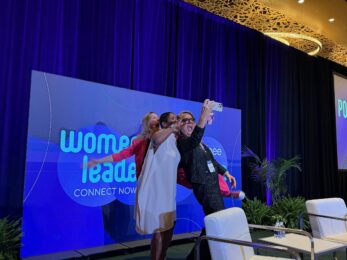Society as a whole–including meeting planners–failed to prepare effectively for the COVID-19 pandemic. You probably experienced extreme stressors ranging from sudden event cancellations to uncertainty about how to protect future meetings. As a neuroscientist whose expertise is in disaster avoidance, decision making, strategic planning and risk management, I have some strategic suggestions for how meeting planners can best adapt to and plan for the long-term impact of the pandemic.
Why Our Brain Causes Us to Be Underprepared for Major Disruptions
First, we need to understand the causes of the initial failures to evaluate accurately the probability and impact of COVID-19.
We suffer from many dangerous judgment errors that researchers in cognitive neuroscience and behavioral economics call cognitive biases, which undermined our ability to address the pandemic. These mental blind spots result from a combination of our evolutionary background and specific structural features in how our brains are wired.
Specifically, you need to watch out for three cognitive biases.
- The normalcy bias causes our brains to assume things will keep going as they have been—normally—and evaluate the near-term future based on our short-term past experience. As a result, we underestimate drastically both the likelihood of a serious disruption occurring and the impact of one if it does occur.
- When we make plans, we naturally believe that the future will go according to plan. That wrong-headed mental blind spot, the planning fallacy, results in us not preparing for contingencies and problems, both predictable ones and unknown unknowns.
- Last but not least, we suffer from the tendency to prioritize the short term and undercount the importance of medium and long-term outcomes. Known as hyperbolic discounting, this cognitive bias is especially bad for evaluating the potential long-term impacts of the COVID-19 pandemic.
Realistic Pessimistic Pandemic Preparation

To address these cognitive biases in relation to the pandemic, you have to adopt a realistic, even pessimistic perspective. We have no way of coping with the pandemic save a combination of shutdowns and social distancing. We could see wave-like periods of tight restrictions that result in less cases, then loosened restrictions with spikes of cases, and then again tightened restrictions.
Such waves will last until we find an effective vaccine and vaccinate at least the more vulnerable demographics. If things don’t go perfectly, it might be more like 2023 or 2024. In more pessimistic scenarios, we might not have an effective vaccine until 2027 or even later.
Does that feel unreal to you? That’s the cognitive biases talking. We still don’t have an effective vaccine for the flu, as our current version is only about 50% effective in preventing infections. But we still meet. We just take the risks into consideration.
Fundamentally Change Your Meeting Model
You need to be realistic about what will be possible in the meantime and that may require a shift to virtual meetings. Yet the vast majority of meeting planners have little experience with streaming. So, how can you provide high-quality, cost-effective meetings in virtual settings? Neuroscience suggests two important areas to address—novelty and emotion.
First, ensure that your virtual meetings involve novelty, a positive sense of something new and surprising. Neuroscience research shows that novelty improves audience experience, helping them remember the information they gained at your event. Novelty also encourages audience members to explore new opportunities and concepts.
To create novelty, break expectations (in a good way), without overwhelming people with too many surprises. Audiences are used to PowerPoint presentations at virtual events. Find ways to positively surprise them. To help them explore new ideas, combine novelty with audience engagement tools that enable exploration.
Second, develop a clear emotional arc for your virtual meetings. Studies show the critical importance of emotional involvement for making a powerful impact on audiences. It’s especially helpful to make the event personally emotionally relevant to audiences, so that they identify individually with the speaker, story or topic.
One of the easiest ways to create an emotional line is to develop a story for the meeting. Imagine your audience member as the hero of the story. What do you want them to feel as they go through the story of your event? Consider every step of the process, from the initial marketing and registration process to the activities in the event itself, to the post-event follow-up materials. Create the kind of experiences that would help the audiences feel what you want them to feel.
Conclusion
Of course, you’ll want to adapt these broad guidelines to your own needs. When you revise your strategic plans in a way that accounts for the cognitive biases associated with COVID-19, you’ll protect your meeting planning strategy from deeply inadequate gut reactions in the face of such slow-moving train wrecks.
Dr. Gleb Tsipursky is an internationally-recognized author, behavioral economist, cognitive neuroscientist and academic on a mission to instill leaders with the most effective decision-making strategies. He is the author of several books, including Never Go With Your Gut: How Pioneering Leaders Make the Best Decisions and Avoid Business Disasters (Career Press, 2019), and has over 550 articles and 450 interviews in publications such as Inc. Magazine, Entrepreneur and Fast Company. Contact him and register for his free Wise Decision Maker Course here.





